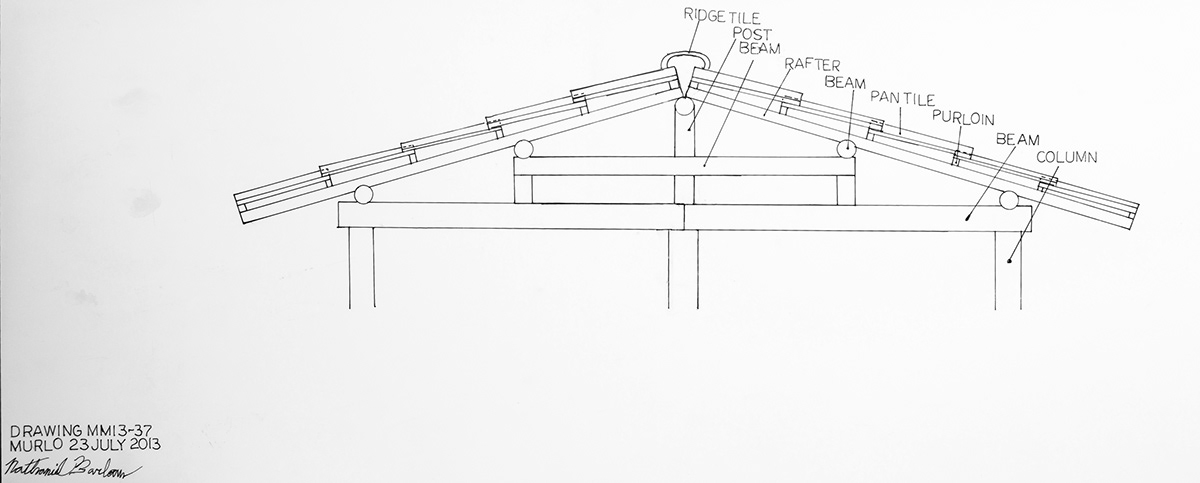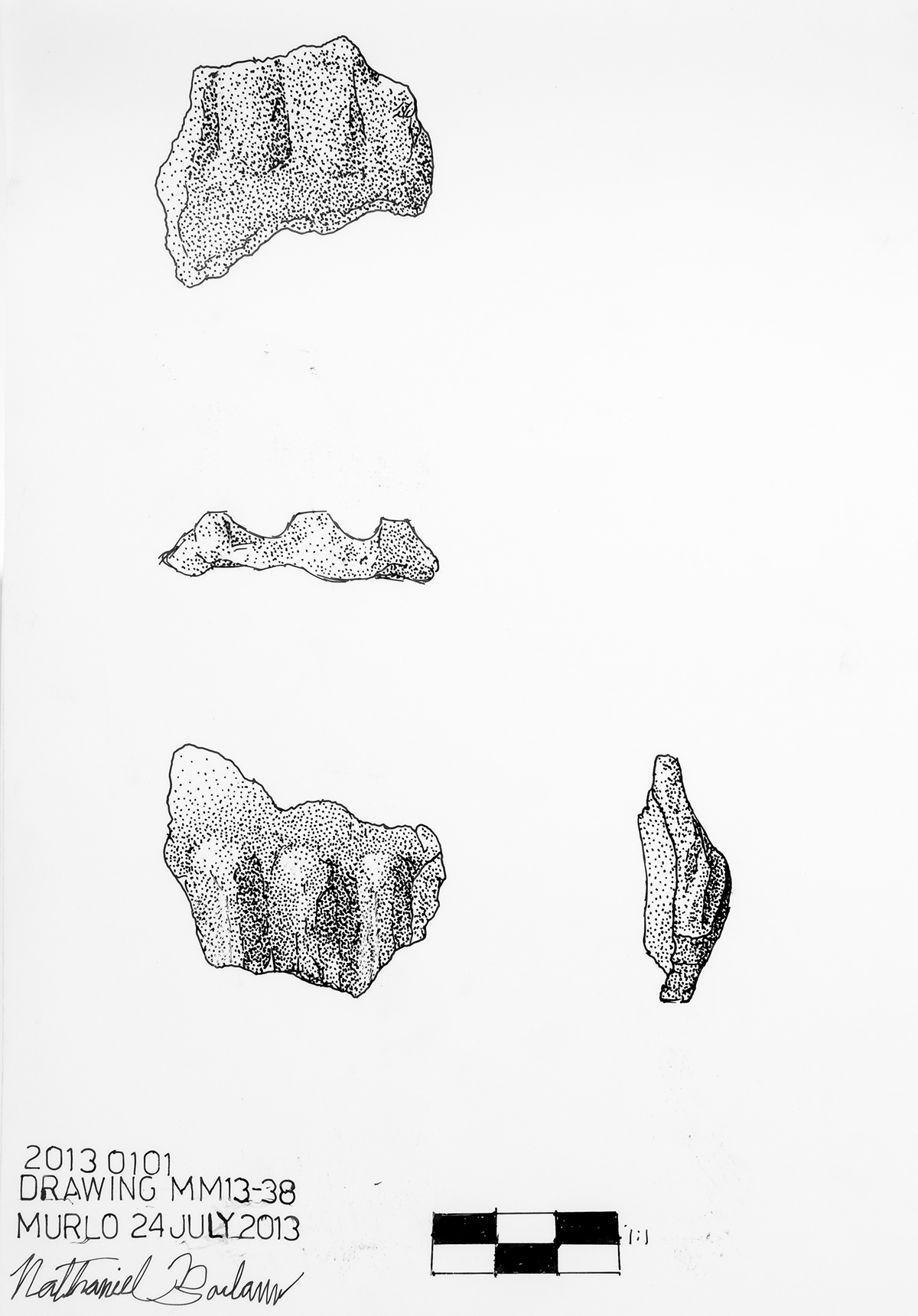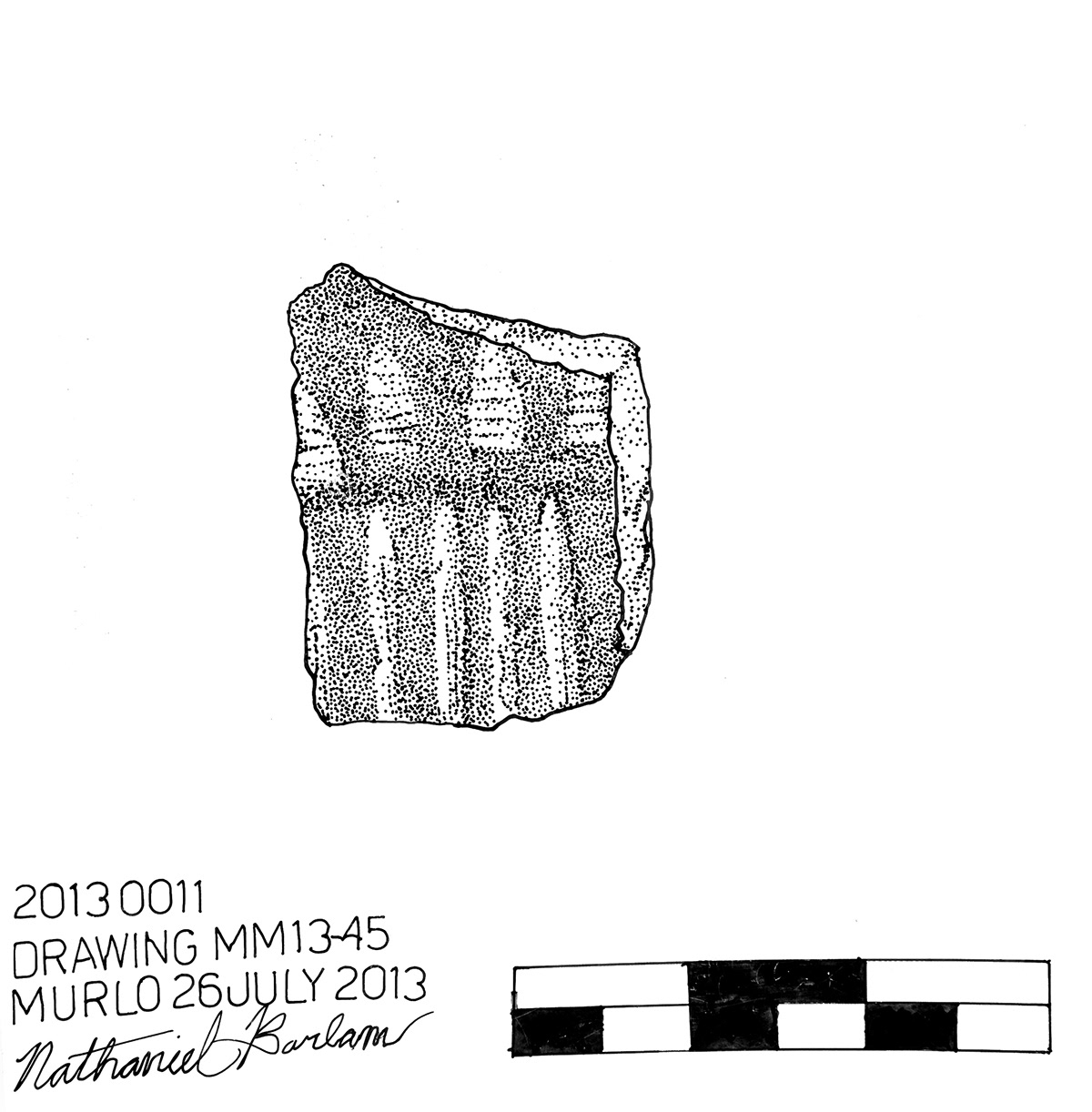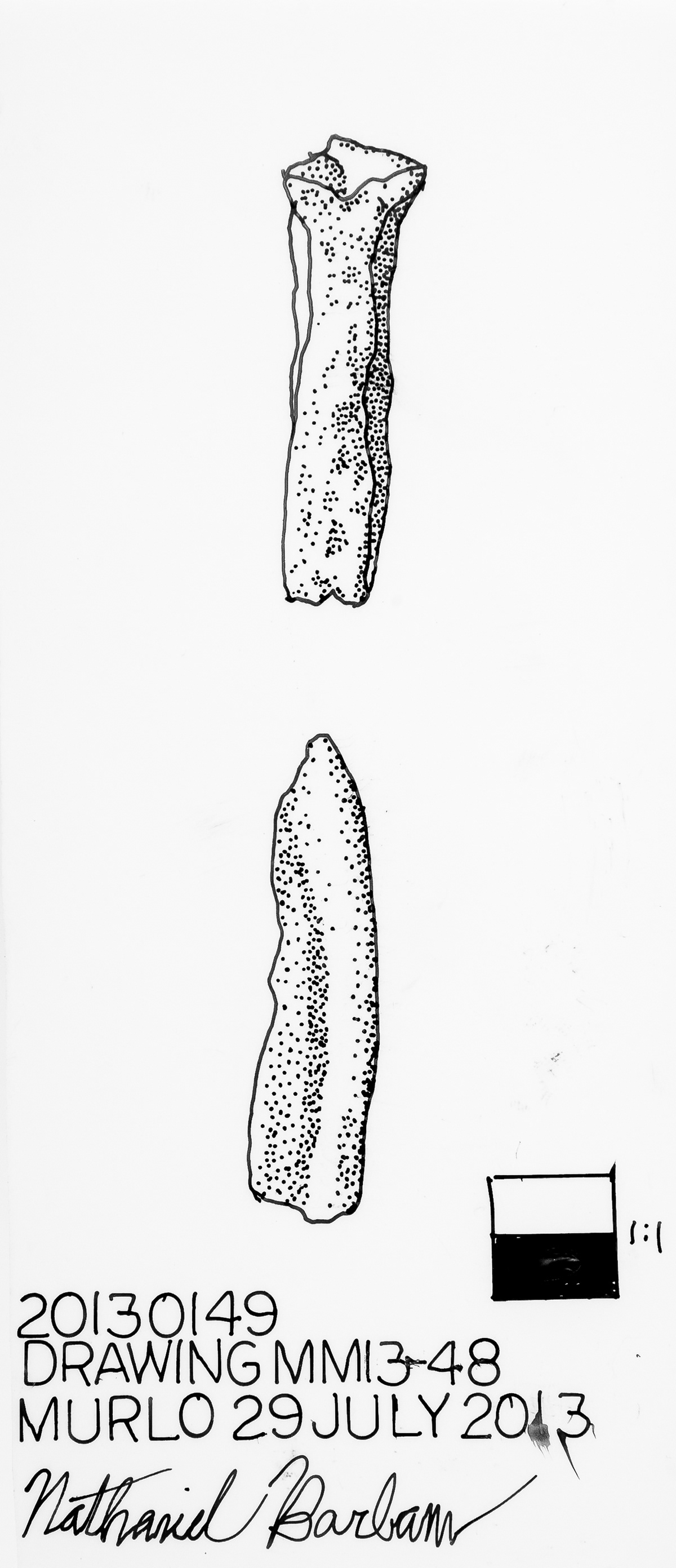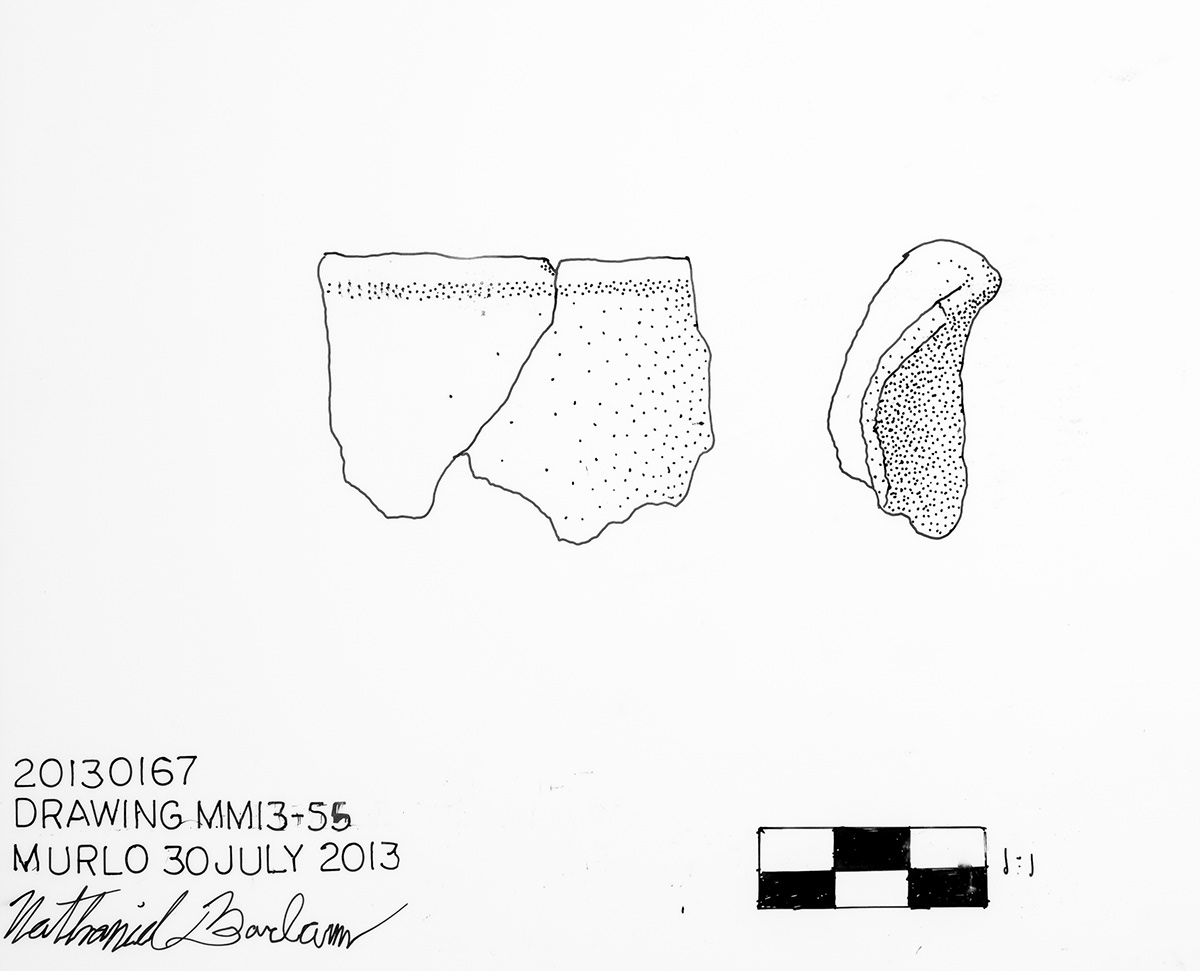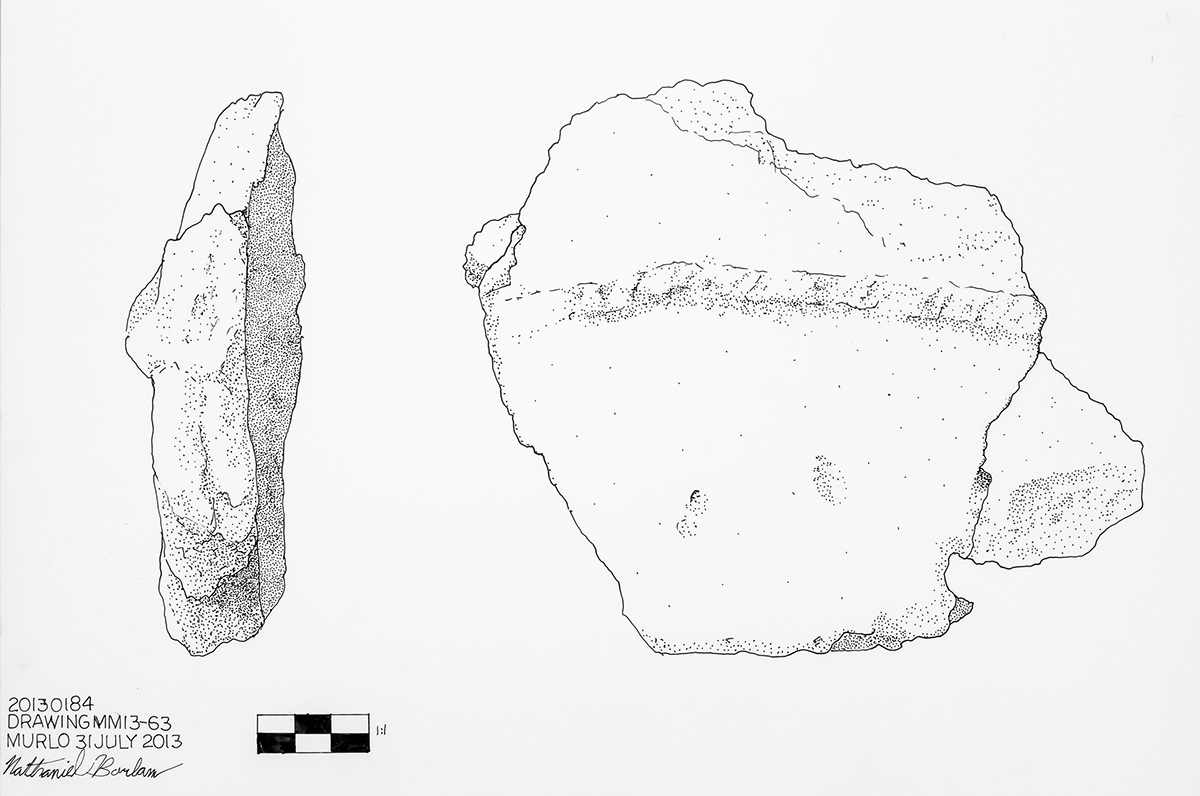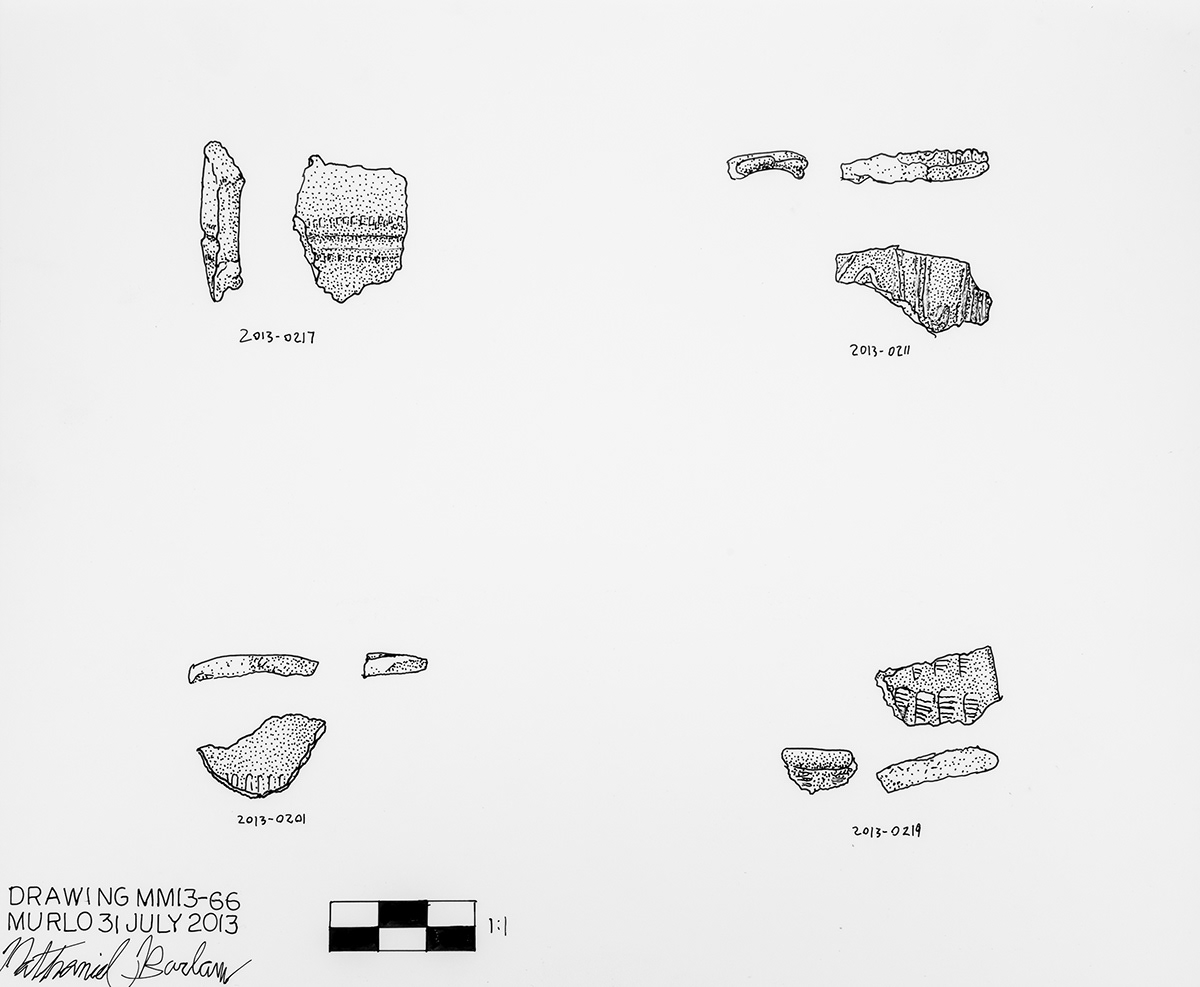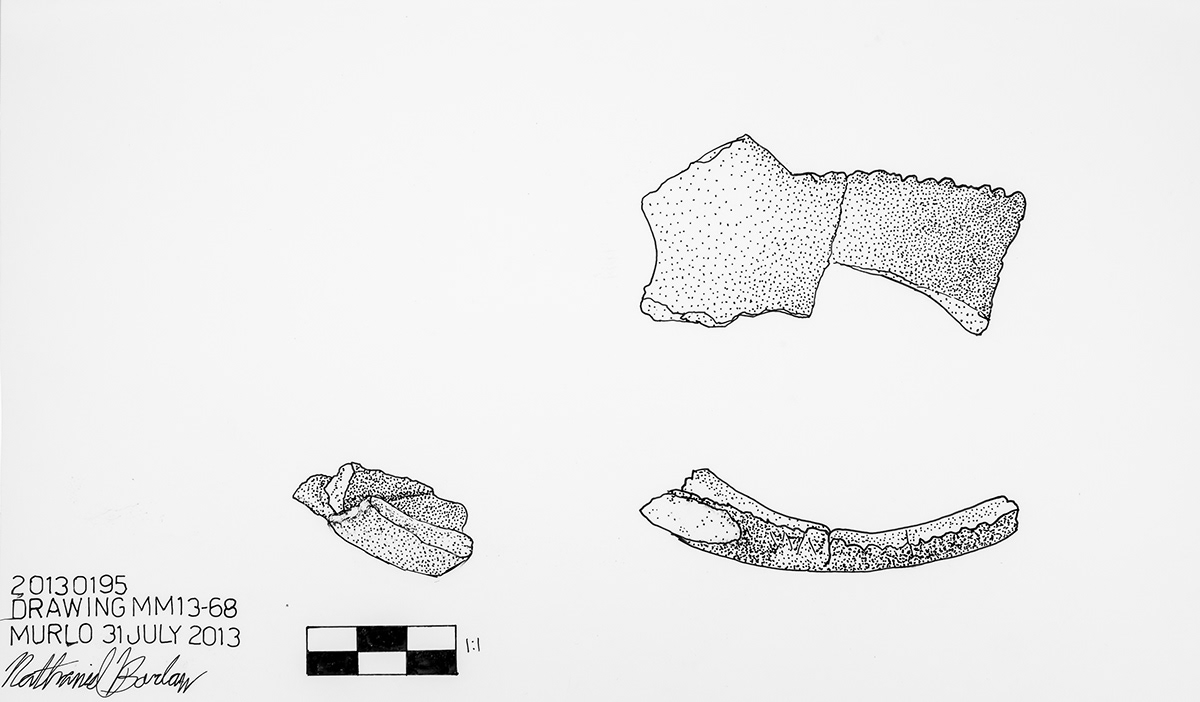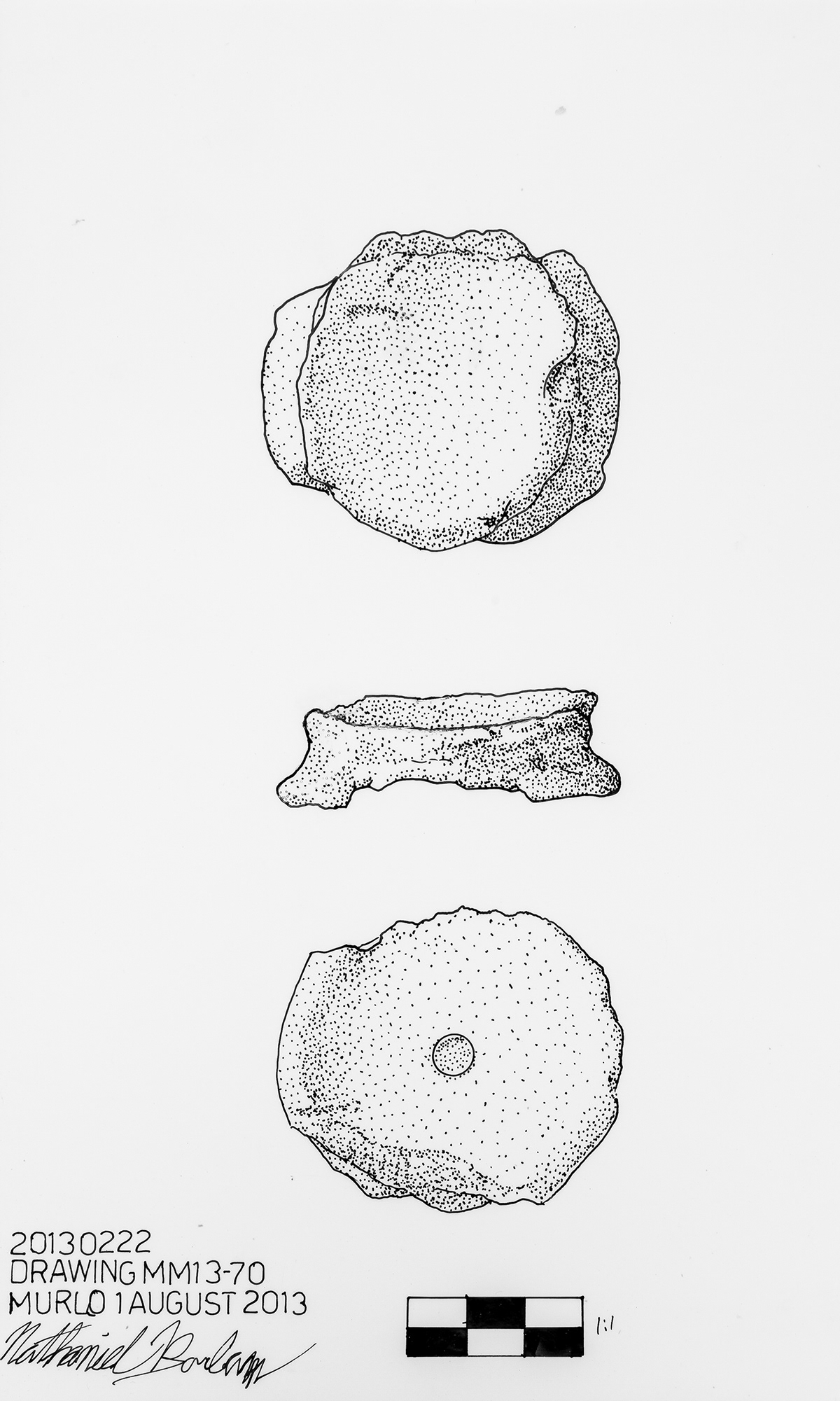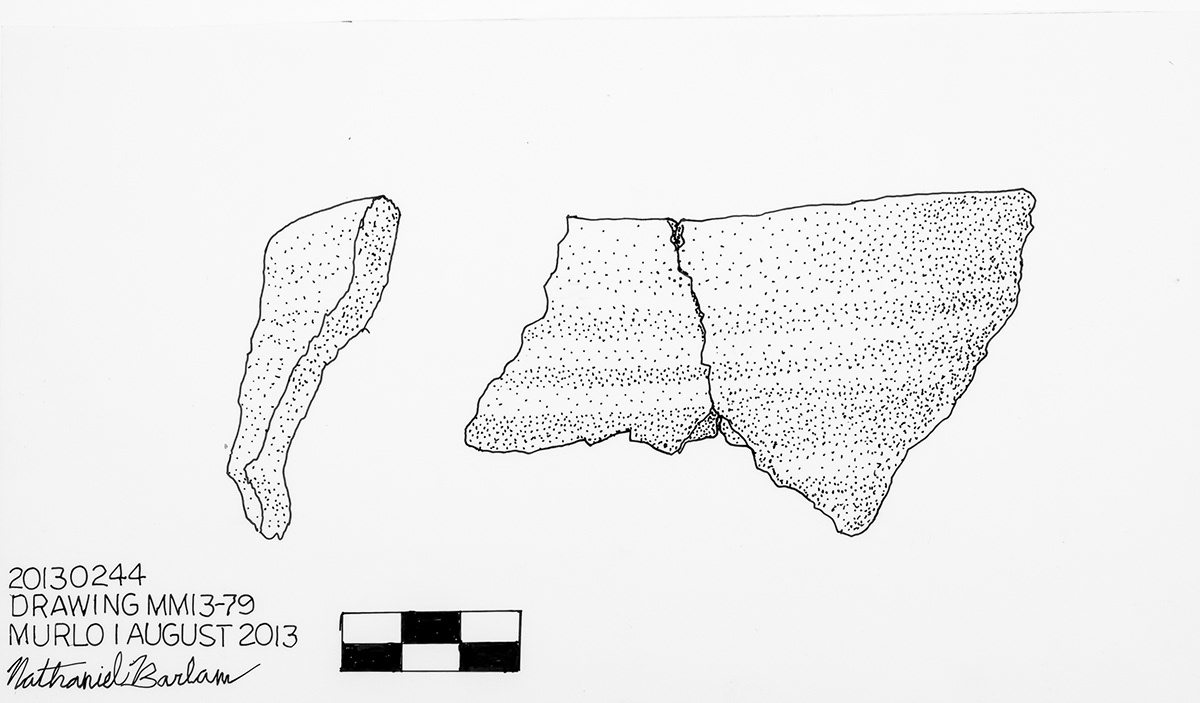Over the course of 6 weeks I participated on an archaeological dig in Tuscany, Italy. The dig at Poggio Civitate, which has been under excavation for almost 50 years, offered me a unique experience to refine my illustration, measurement, and diagramatic techniques in a way that is accurate and straightforward. I feel the work I completed integrates well with my architectural studies, as it allows me to present my projects in a clear language.
I have presented the drawings I completed in the order they were done, to give a sense of how my technique developed as I got more accustomed to stipling. I worked alongside 3 other extremely talented illustrators, and together we helped document what was being excavated, along with interpreting it or developing a logical context for it. Every work is done on mylar, using rapidograph pens. The scale on each is in centimeters.
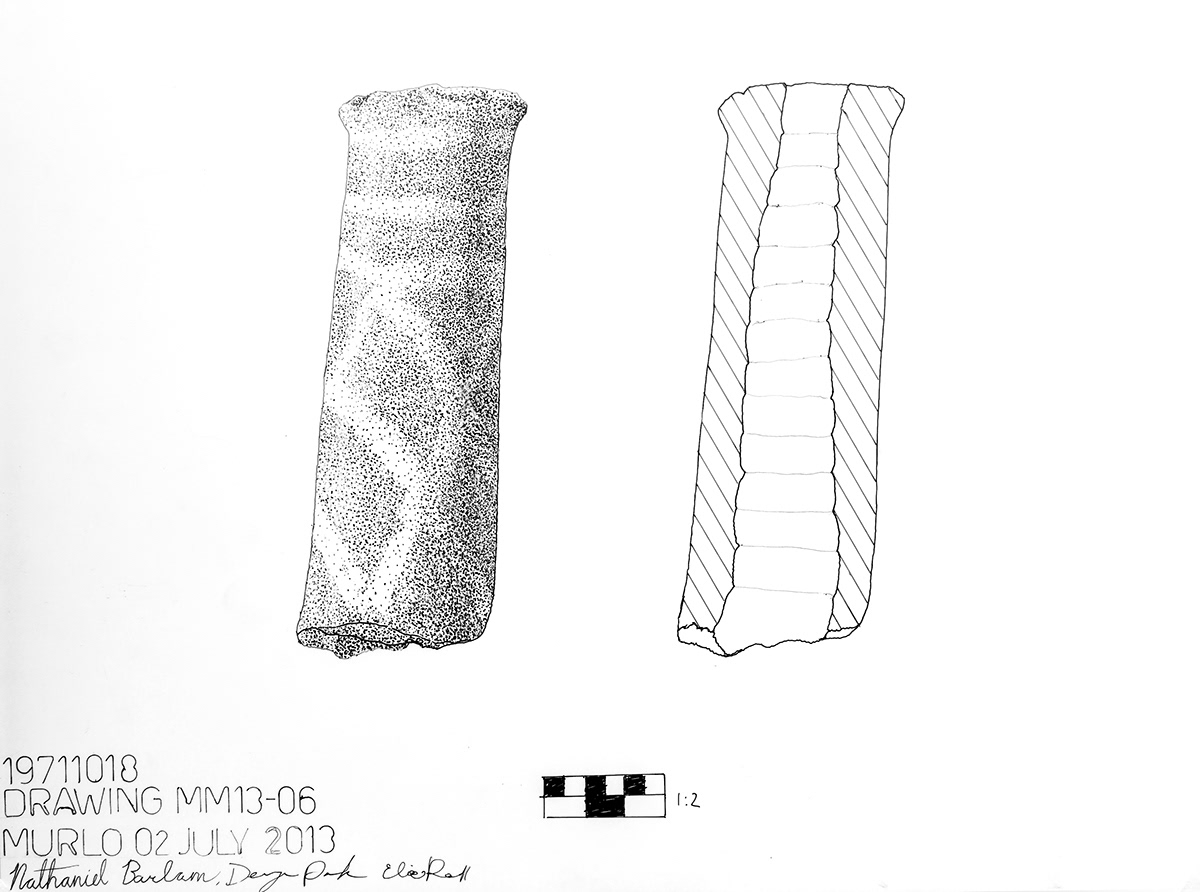
The majority of the illustrations I worked on focused on a series of "funnels" which were found in the 1970's. Their function is still a mystery, but one of their unique features is that every piece has remnants of paint still visible on it, which is extremely unusual since they could date back as far as 600 BCE or so. The funnels (as they have been labelled) were being looked at again this year as a side project.
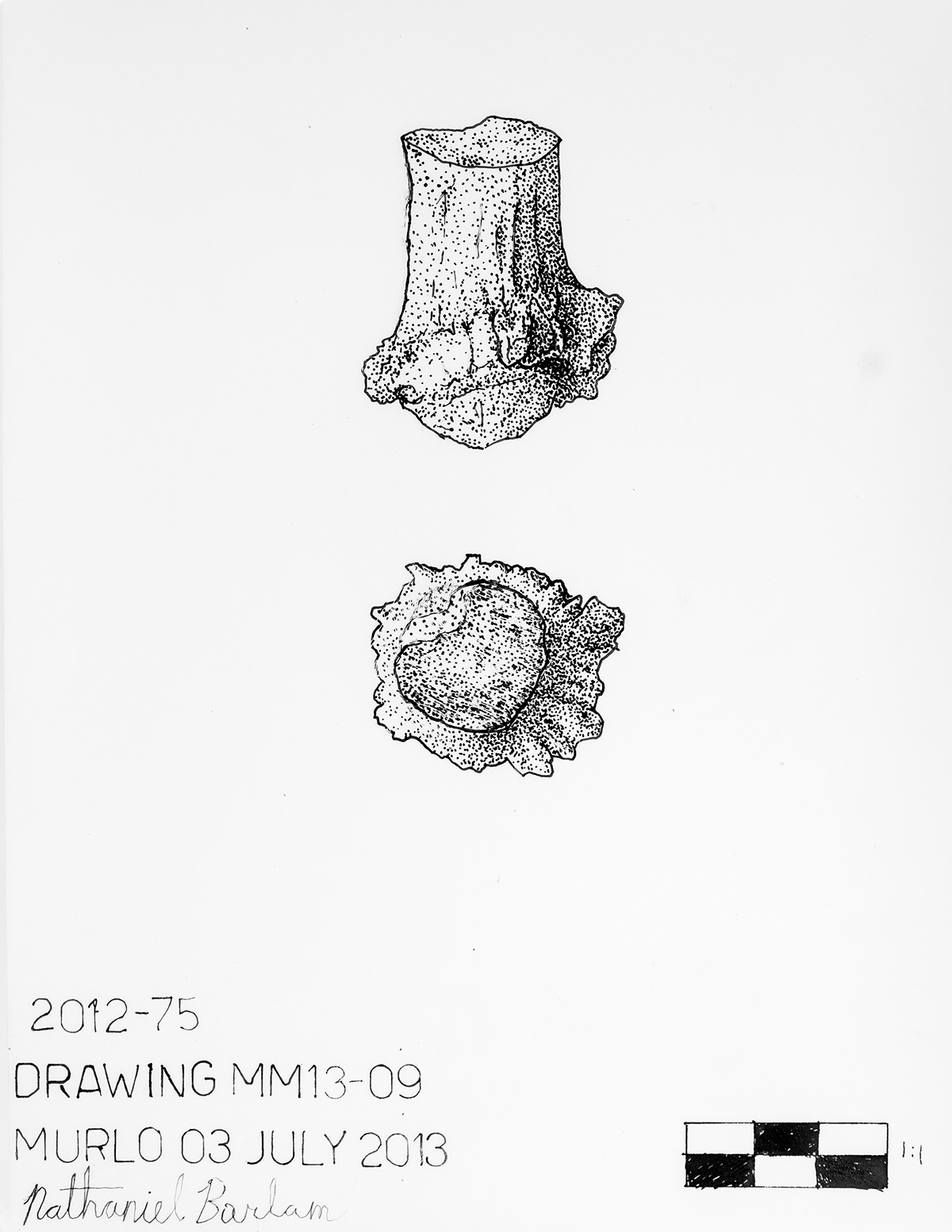
This was a fragment of an antler which had a smooth side that had been worked by the ancient etruscans who occupied Poggio Civitate. The use of it is unclear.
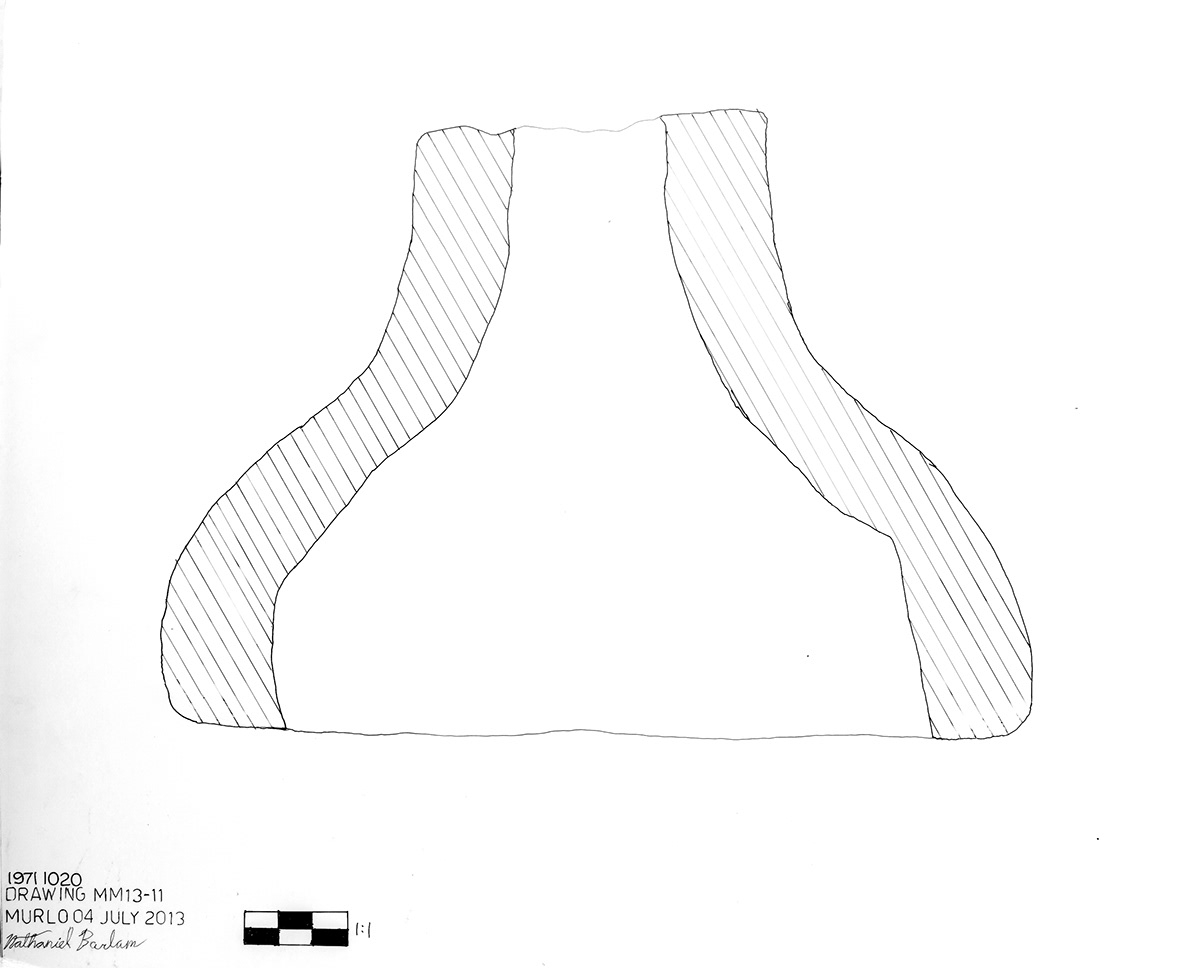

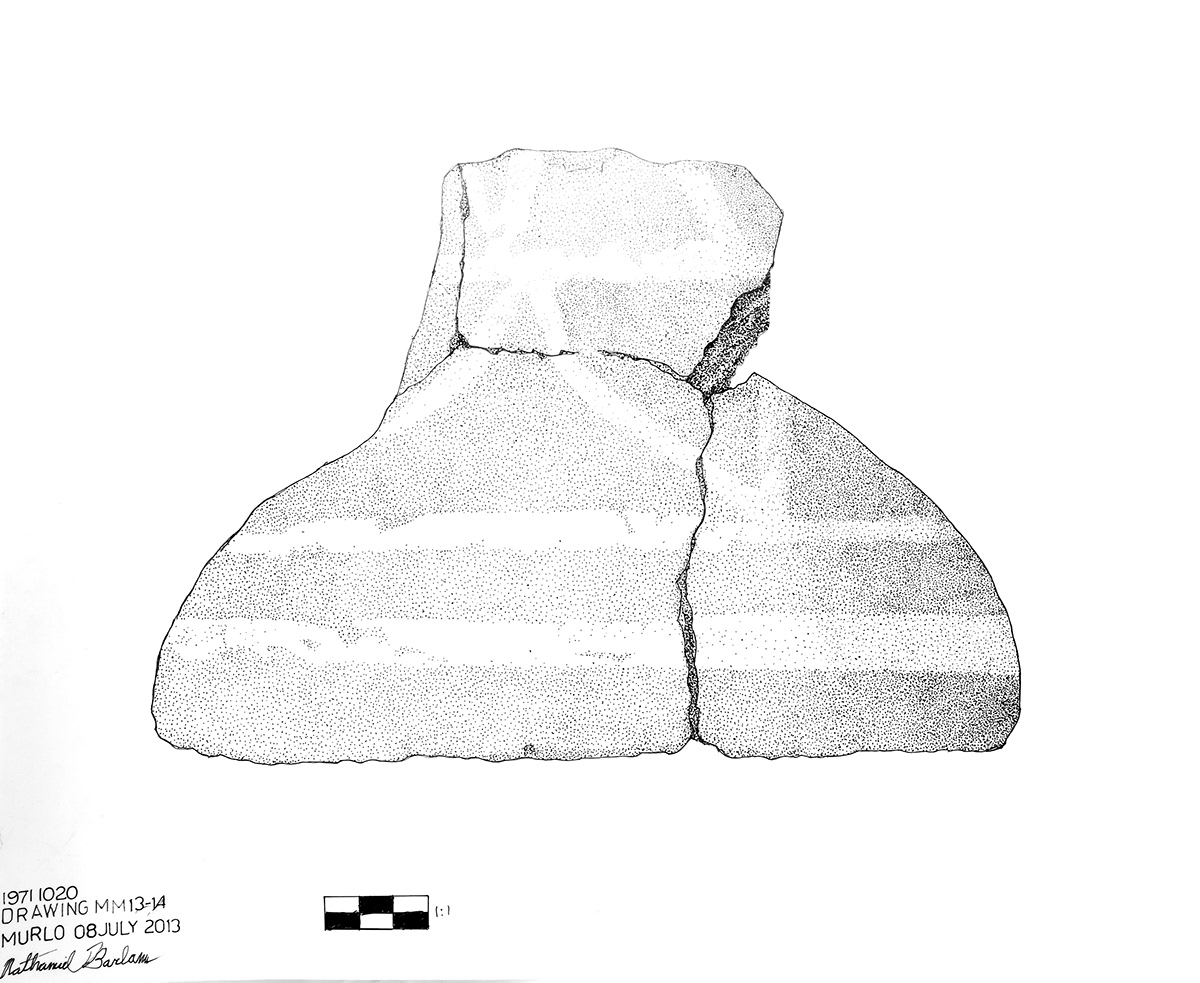
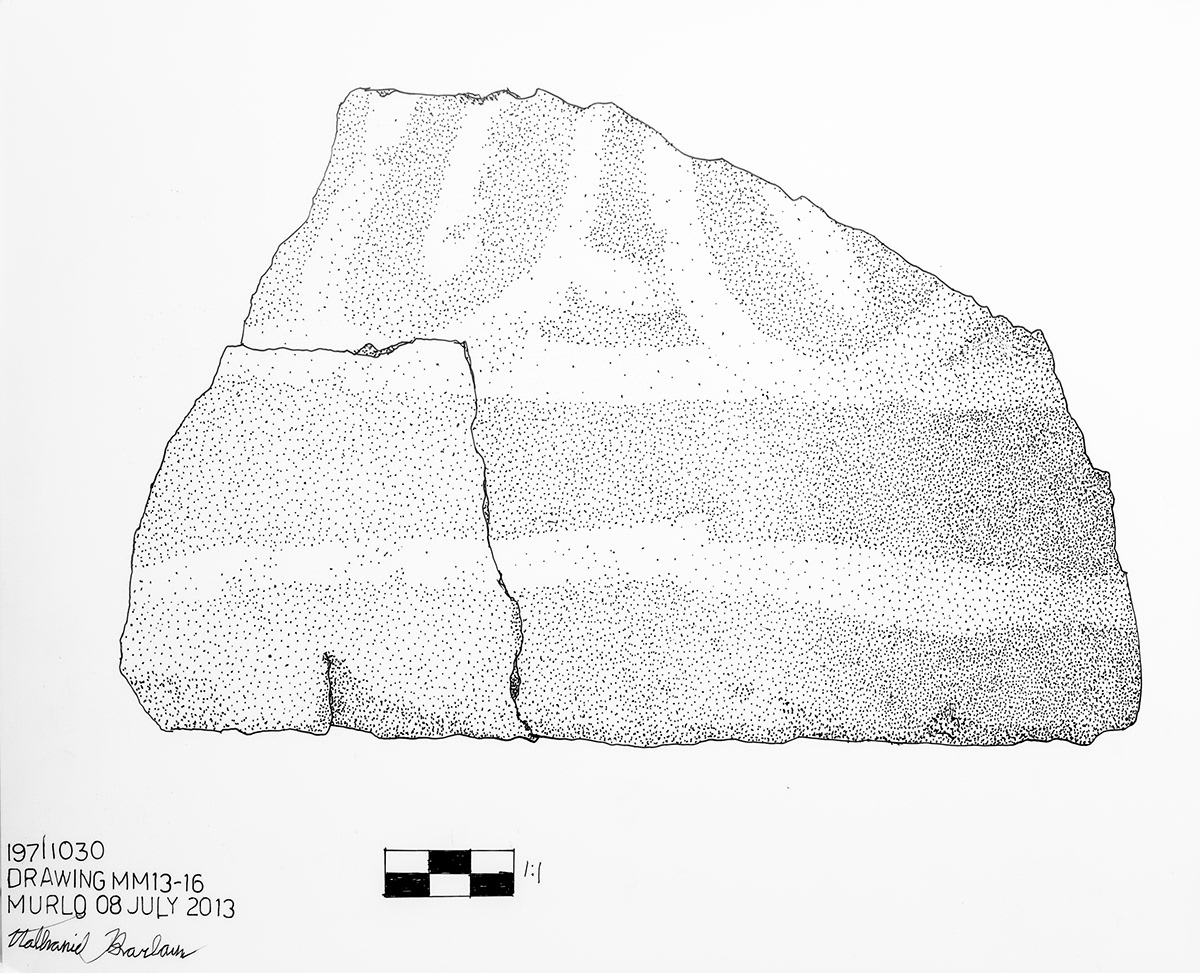
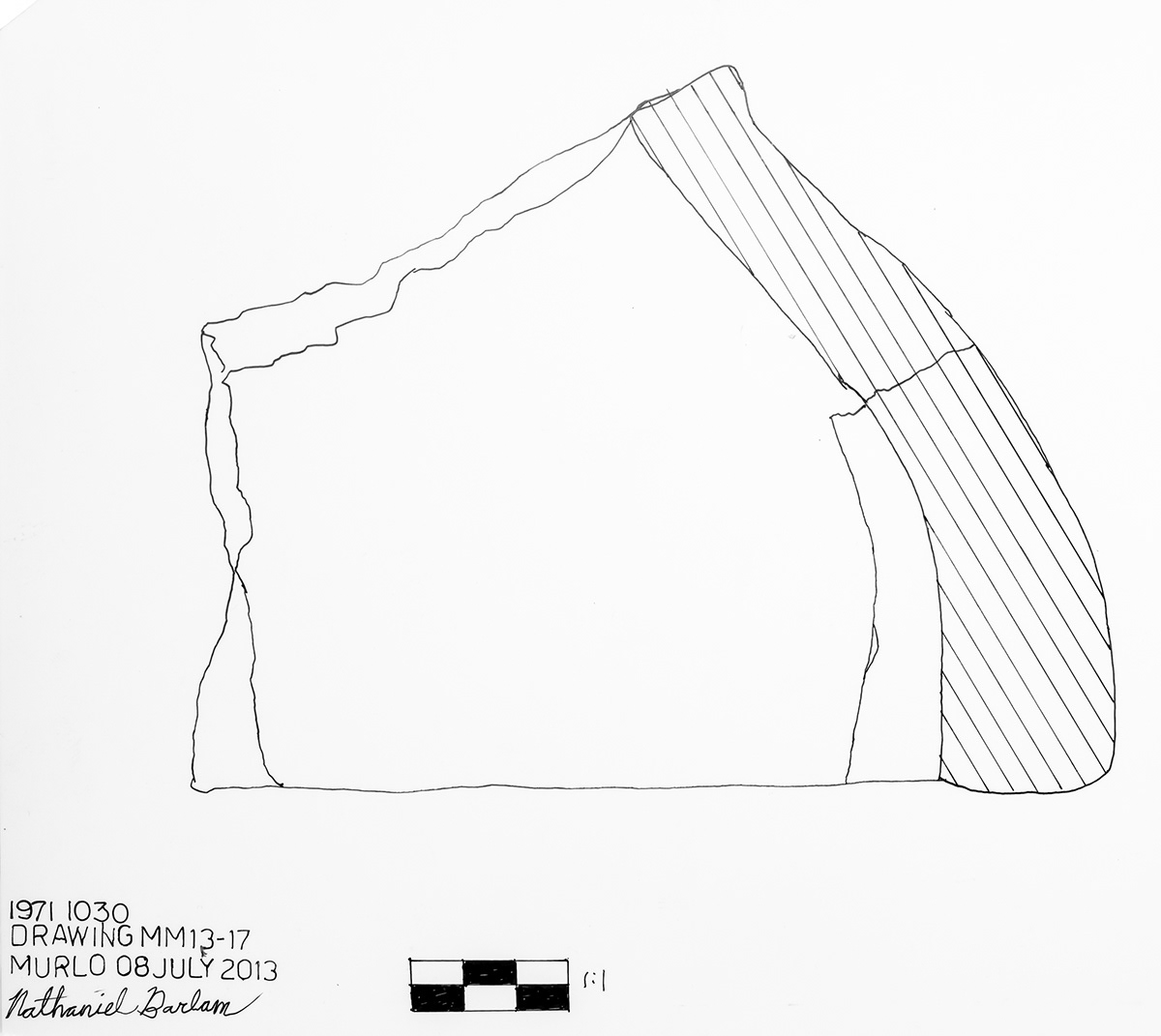


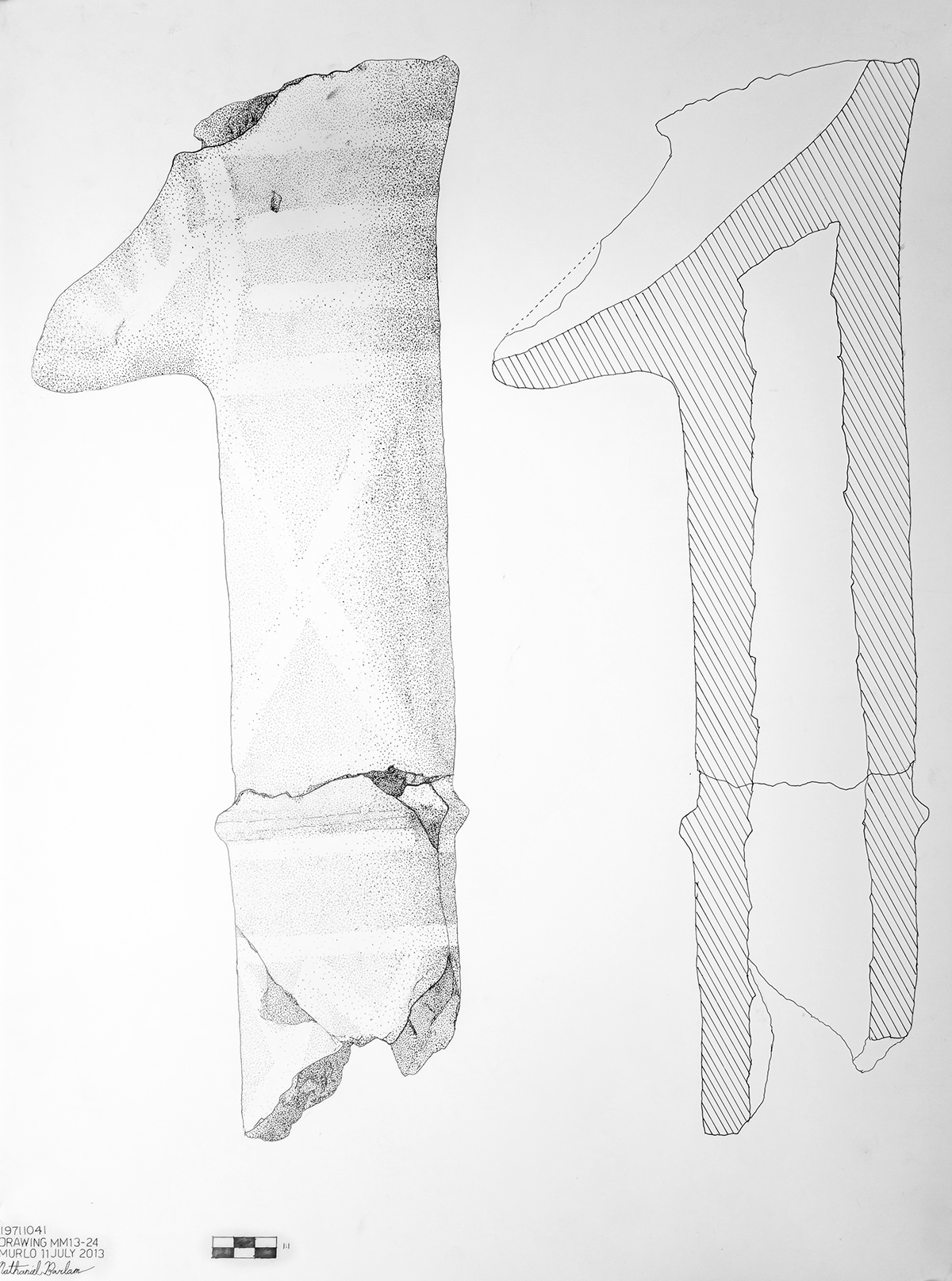
A part of the upper half of the funnels. For an idea of their full shape, look at the cross-section that is farther down.
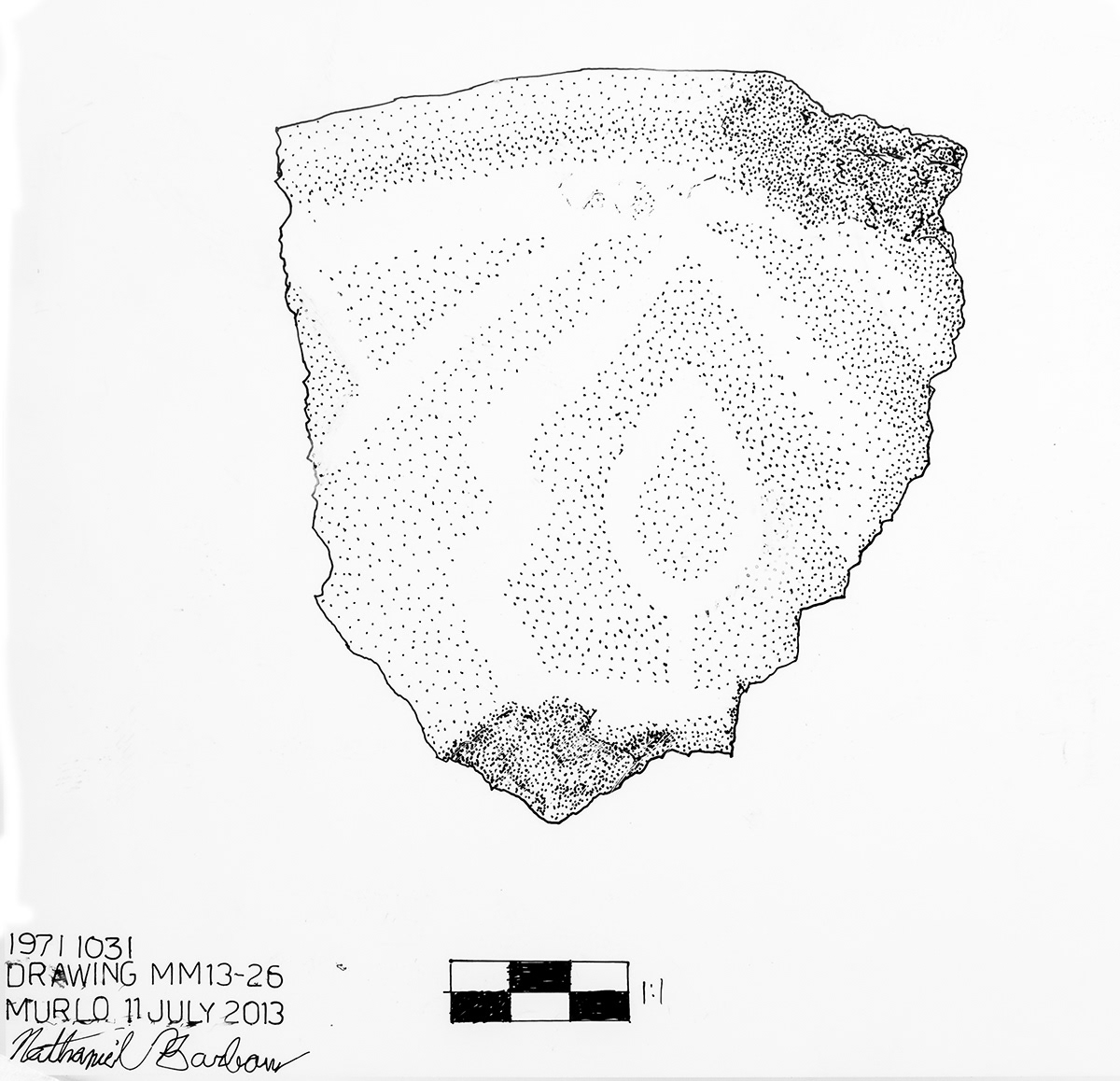
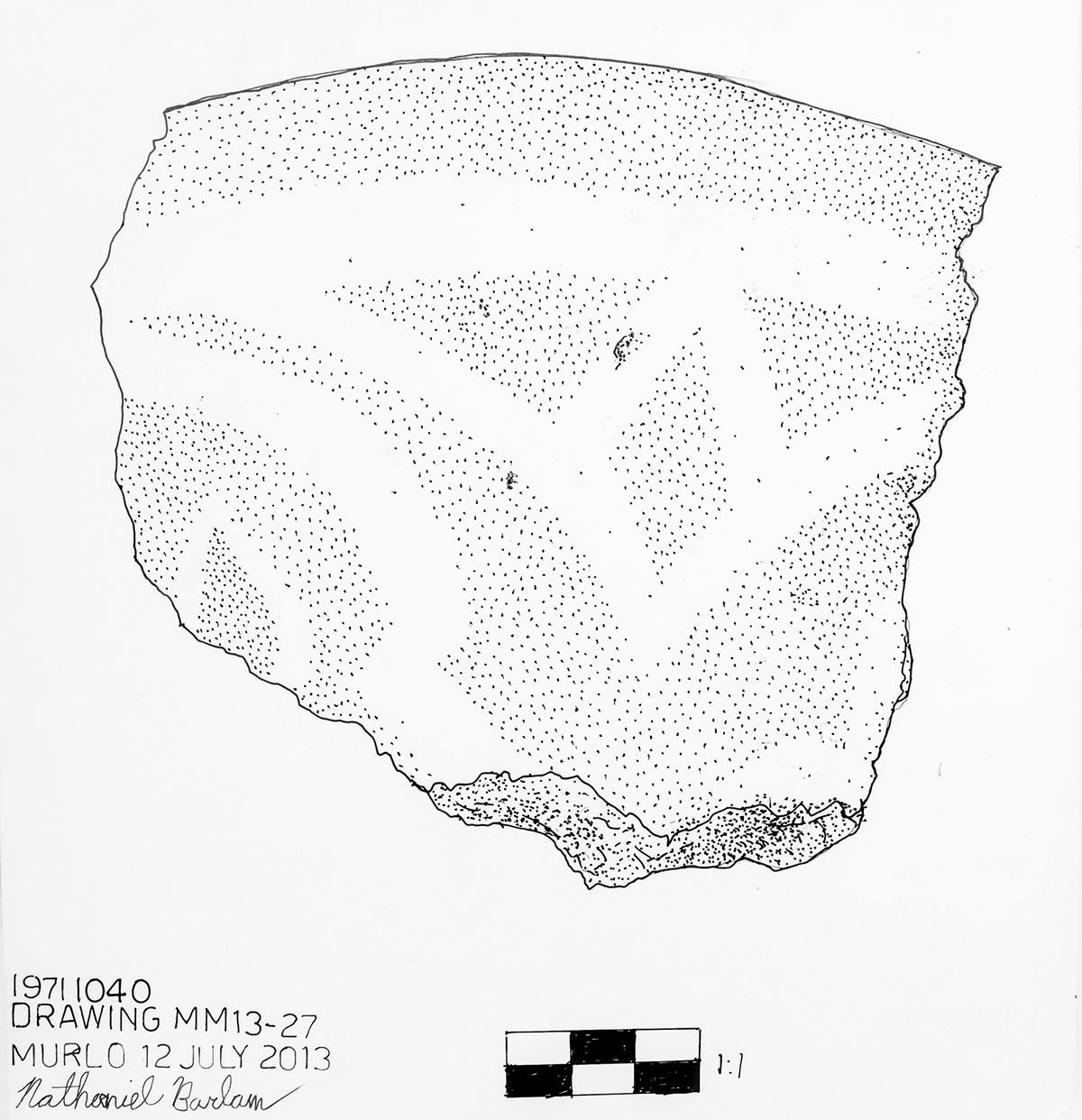
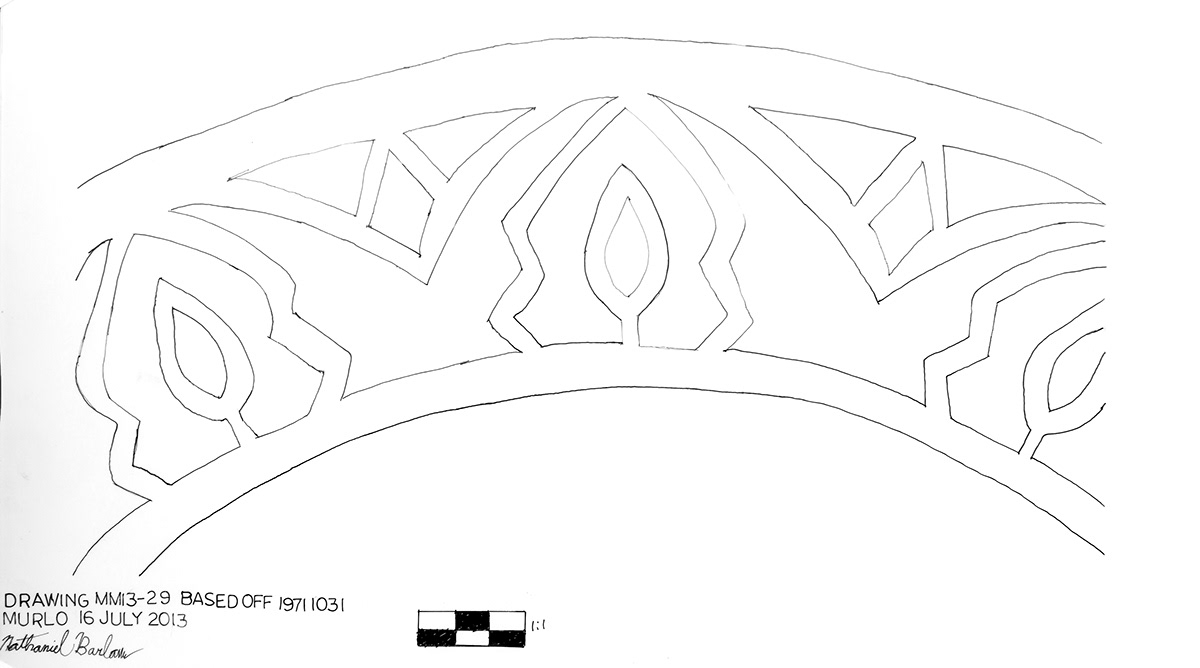
This was a projection of one of the patterns found on the top of the funnels.

This illustration shows some of the different patterns and the location they are found on the funnels. The base and the top of the funnels have on average the most detailed patterns. Unlike Greek ceramics, these are not glazes, but instead were painted.
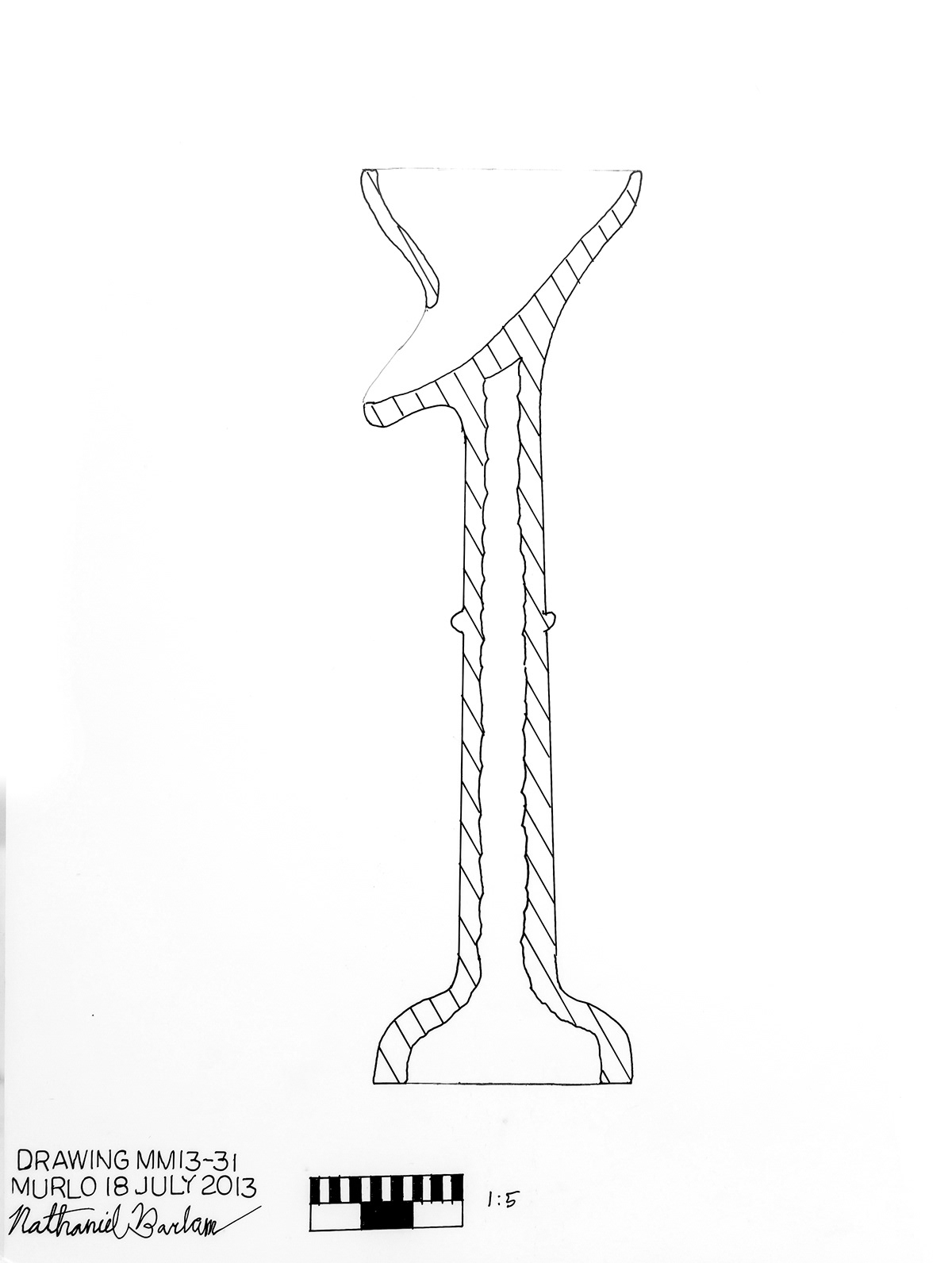
Cross-section of what we believe the funnel looked like. They were about 90 cm in height.
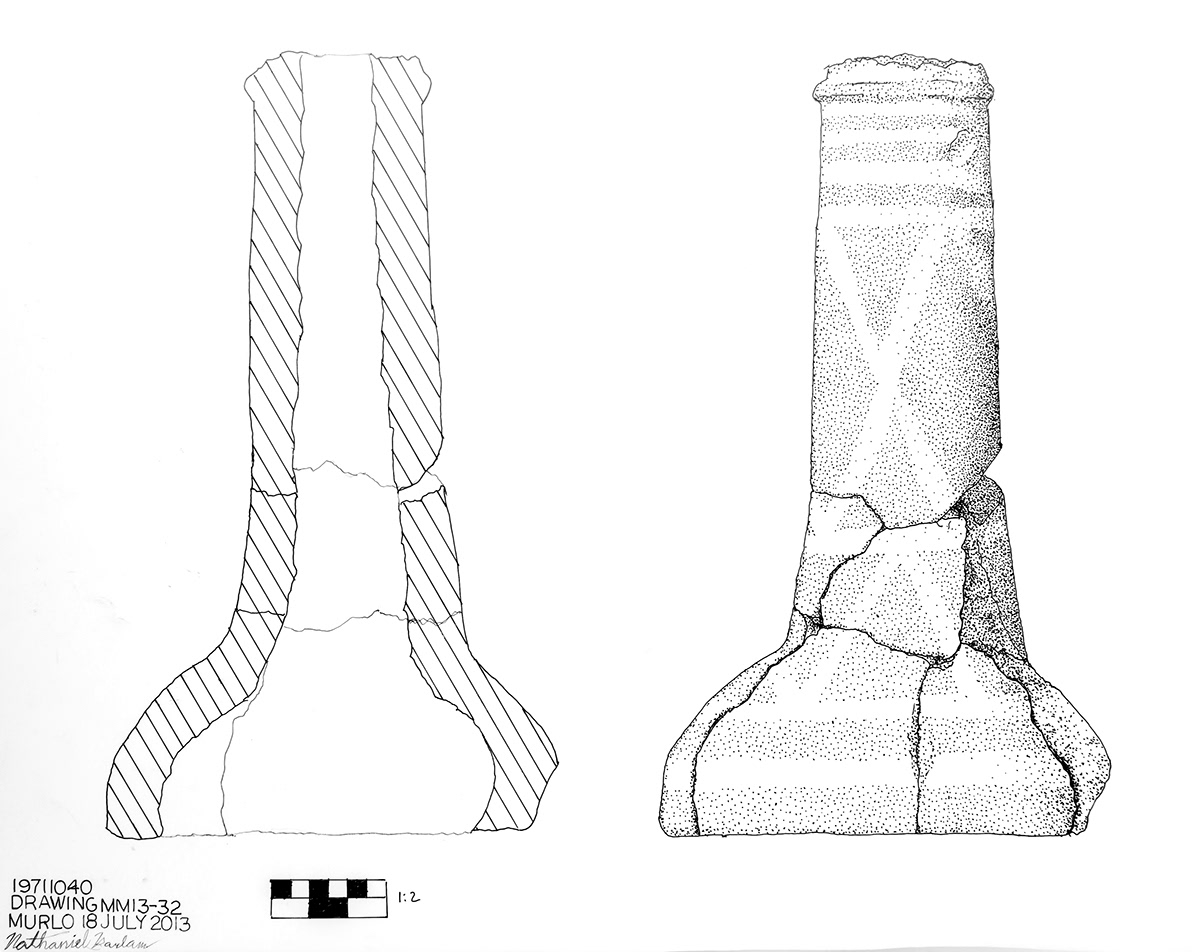
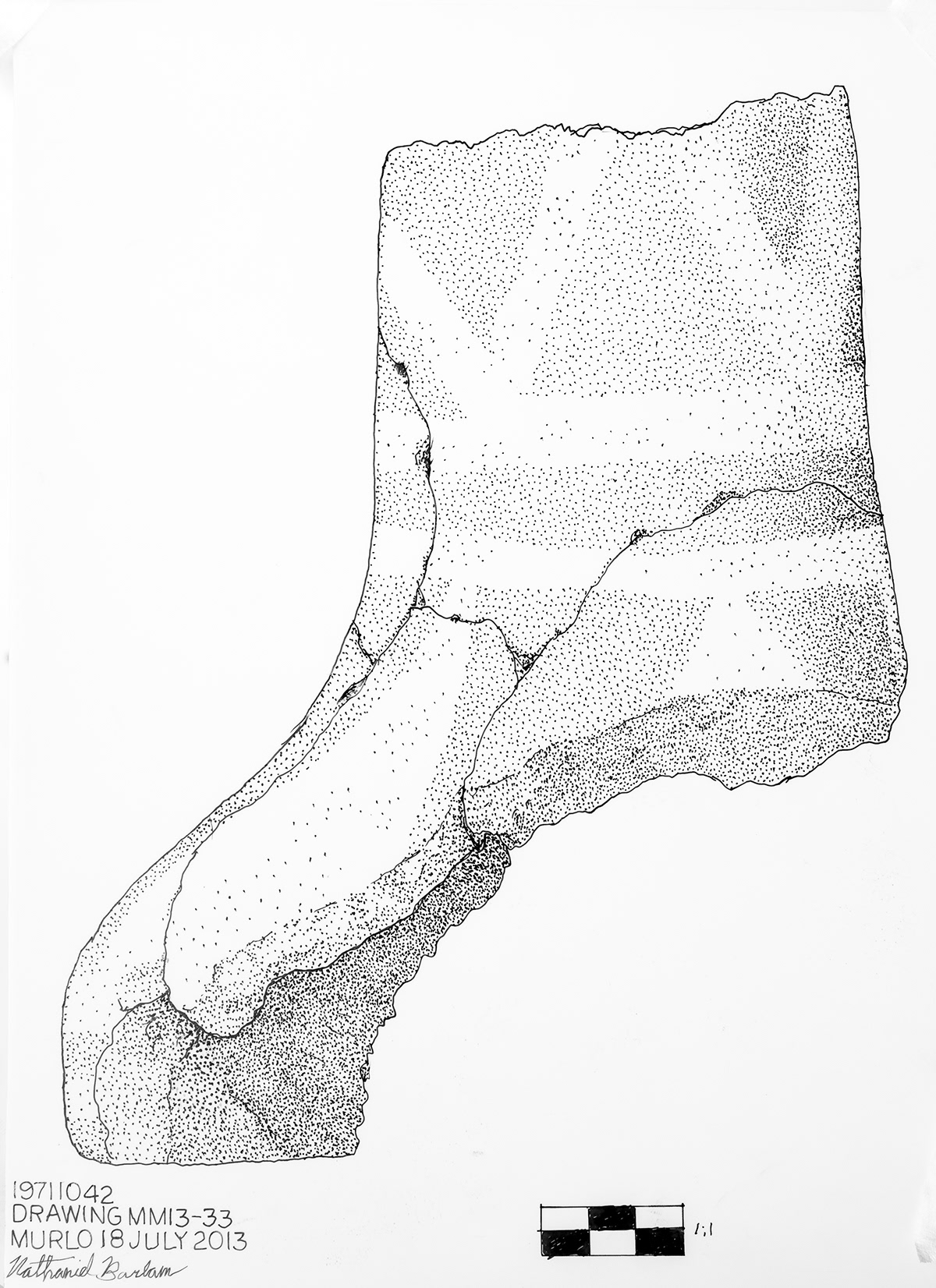
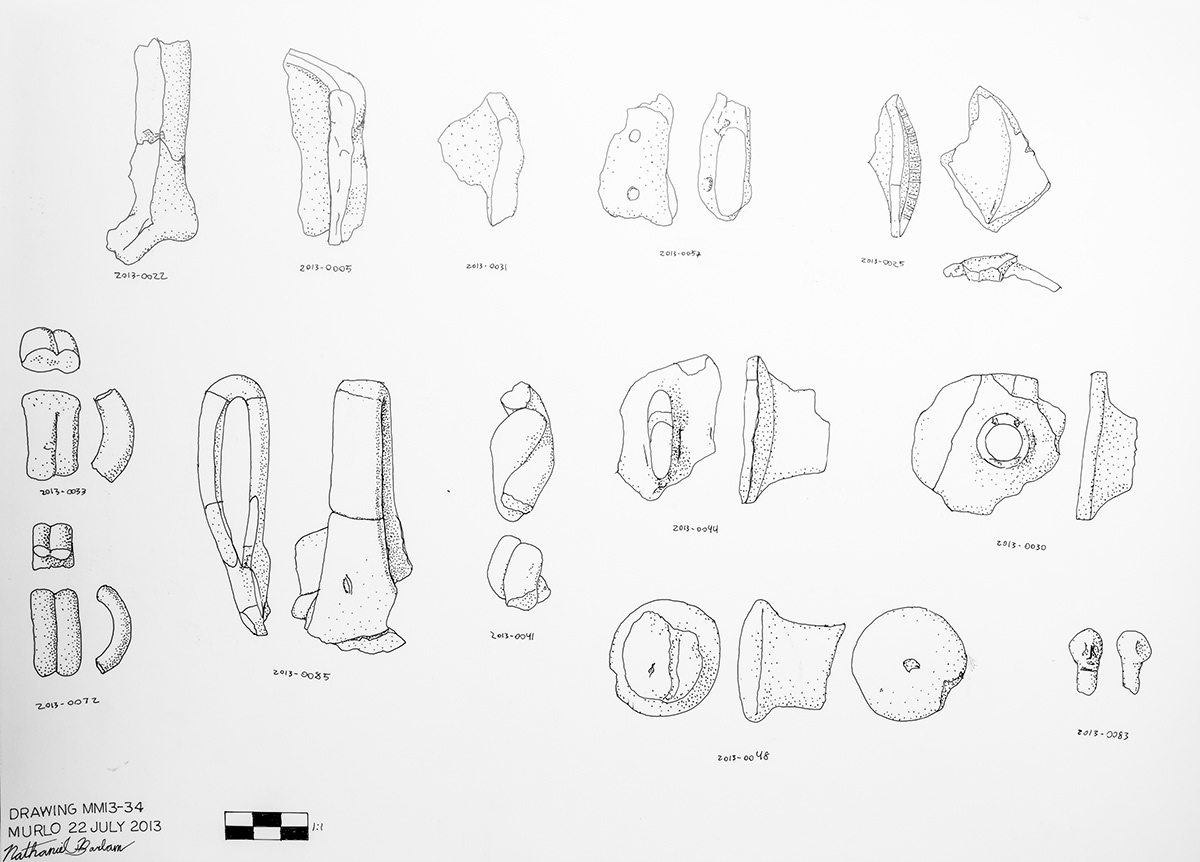
After working on the funnels, I spent the last week or so working on profiles of various artifacts excavated this year.

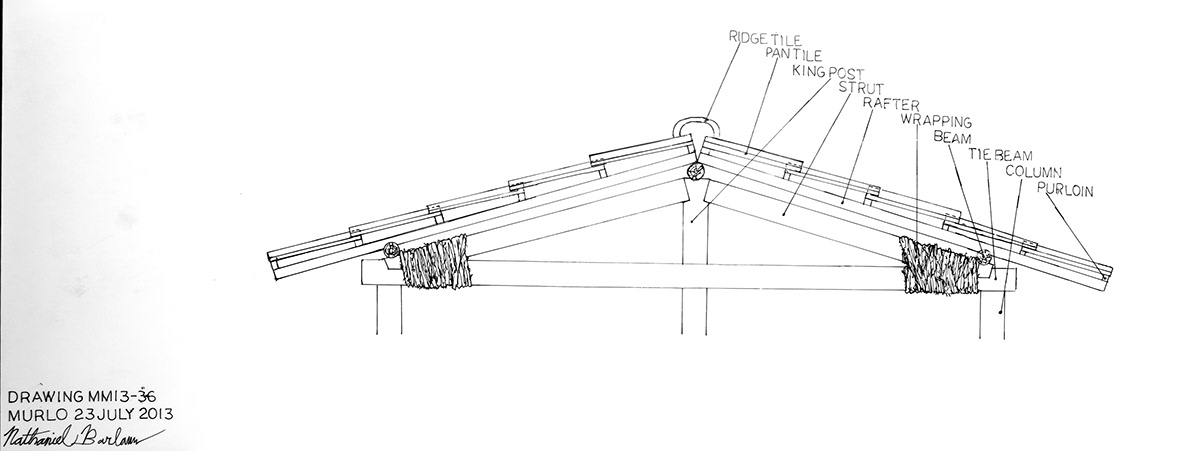
This drawing and the one below are two possible models for the roof system of a workshop which was present at the site during the Orientalizing period. This one involves a simple truss system (similar to a king truss) while the lower one uses a post and beam system. The roof was created with a terra-cotta roofing system that is still in use today. Poggio Civitate contains some of the earliest known examples of this roof system, although it is unclear if it originated there or not.
